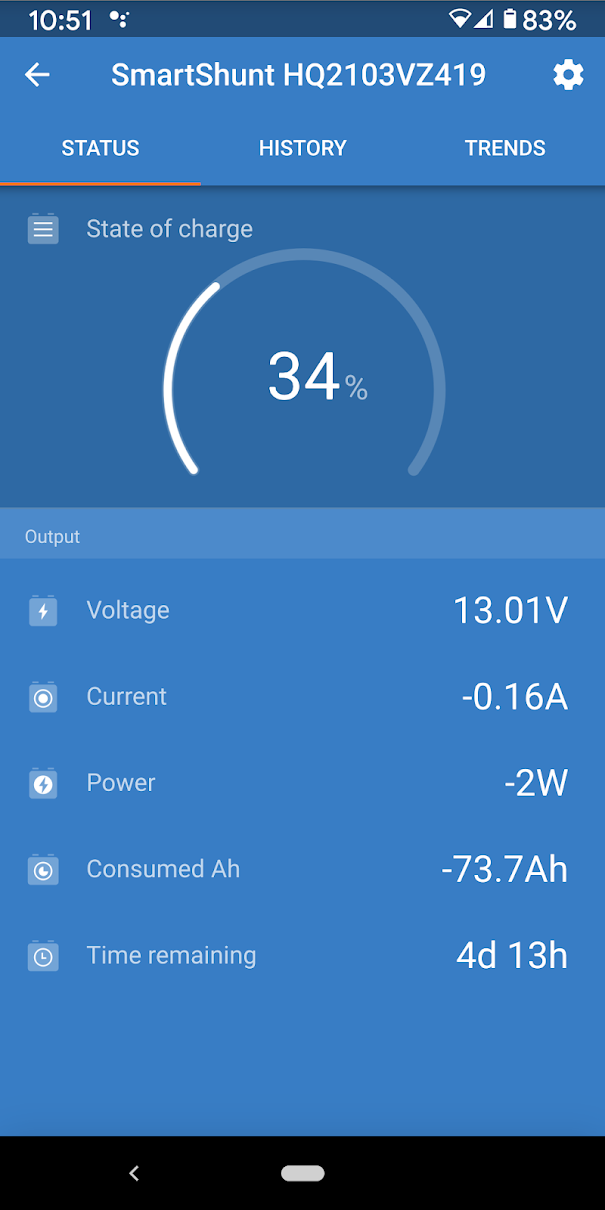Hi - I was wondering if someone might be able to help me understand the SOC reading and how its calculated. I have a 100Ah LiFePO4 battery. I believe I've set all the correct settings to reflect the battery type per the manual (See attached), but I'm not sure I understand the SOC number. If, I've used 73.7Ah of the 100Ah capacity, so that should be ~26% SOC. Looking at the documentation for my battery, a voltage reading of 13.0 is ~30% SOC. Is the shunt "smart" enough to tell from the voltage or other data that the battery might actually have a little more than 100Ah capacity (this is the first discharge cycle since initially charged, so there is no history to draw from). Any info or pointers on how the numbers are being calculated or what to expect over time would be greatly appreciated.
Thank you!

